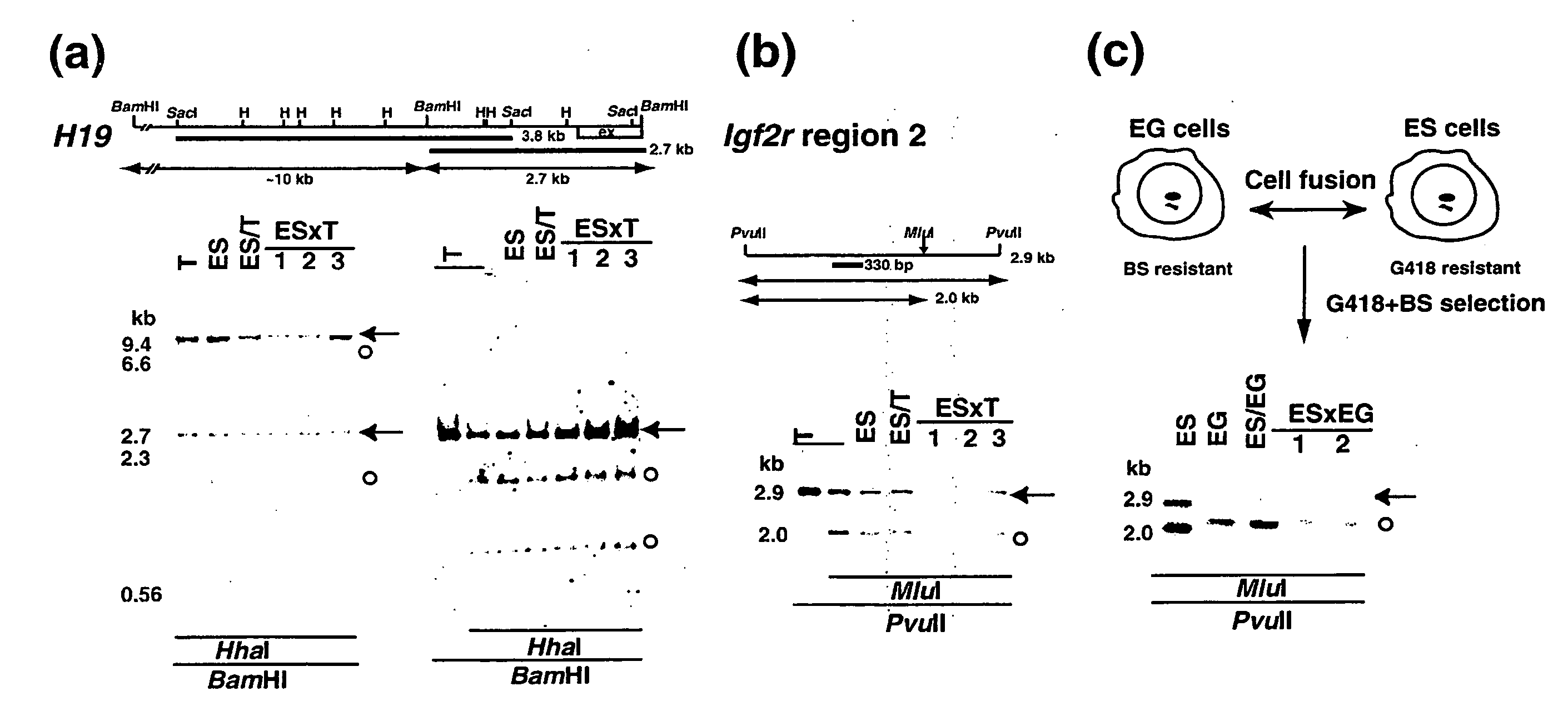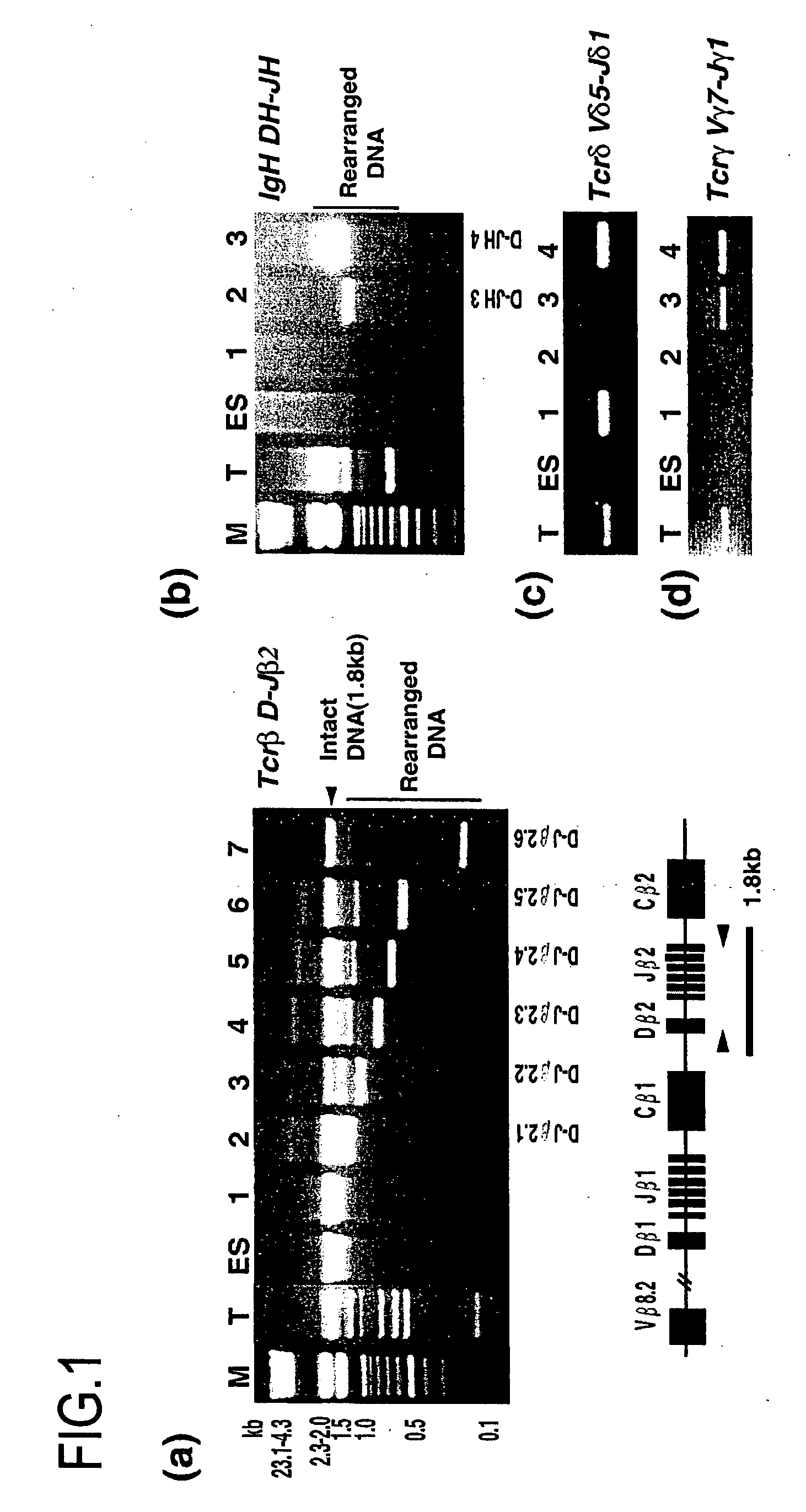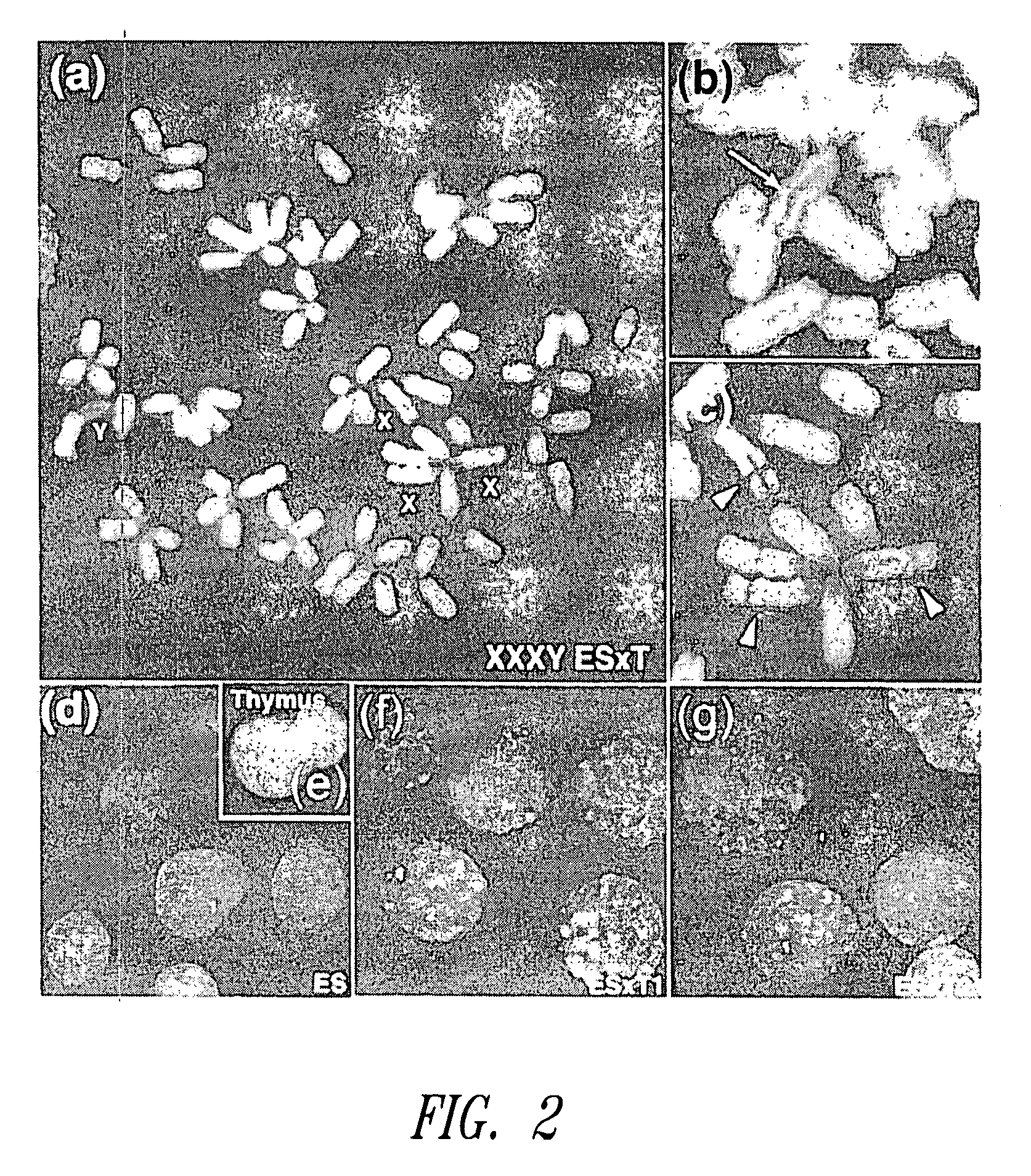Tailor-made pluripotent stem cell and use of the same
a stem cell and stem cell technology, applied in the field of pluripotent stem cells, can solve the problems of unpractical, unclinical application, and inability to meet the needs of patients, and achieve the effect of reducing the level of immune rejection reaction
- Summary
- Abstract
- Description
- Claims
- Application Information
AI Technical Summary
Benefits of technology
Problems solved by technology
Method used
Image
Examples
example 1
Preparation of Fusion Cells of Somatic Cells
[0208] 1. Preparation of Chimeric Embryos
[0209] (1) Establishment of ES Cell Lines and EG Cell Lines
[0210] As ES cell lines, ES cell line TMAS-5 [Isolation, Culture, and Manipulation of embryonic stem cells (pp. 254-290), in “Manipulating the mouse embryo: A Laboratory Manual 2nd Edition” edited by Hogan, Beddington, Castantini and Lacy (Cold Spring Harbor Laboratory Press, USA)(1994)], and G418-resistant ES cell line NR-2 carrying a neo / lacZ reporter gene, which was derived from Rosa26 blastocyst [Friedrich G. and Soriano P., Genes Dev. 5 :1513-1523 (1991)], which were established from E3.5 male 129 / Sv blastocysts, were used. As EG cell lines, EG cell line TMA-58G [Tada M. et al., EMBO J., 16:6510-6520 (1997)], which as established from E12.5 female PGC [Tada T. et al., Dev. Gene. Evol. 207:551-561 (1998)], and bIstoydine hydrochloride (BS)-resistant EG cell line (TMA-58 Gbsr), which was produced by transfecting a drug-resistant gene p...
example 2
Identification and Use of Reprogramming Agent
[0250] (Fusion Cell)
[0251] Electric fusion, culture of ES cells and fusion cells, and analysis of the chromosomes were conducted in accordance with standard procedures well known in the art (Tada, M., Tada, T., Lefebvre, L., Barton, S. C. & Surani, M. A., EMBO J., 16, 6510-6520 (1997)), specifically, as follows.
[0252] To make two types of fusion cells, the present inventors used two types of ES cell lines, the domesticus XY ES cell line deficient for the Hprt gene on the X chromosome and the molossinus XY ES cell line deficient for MP4, which were established in accordance with “Manipulating the Mouse Embryo: A Laboratory Manual 2nd Edition” edited by Brigid Hogan, Rosa Beddington, Frank Castantini and Elizabeth Lacy, pp 253-290, Cold Spring Harbor (USA). Specifically, blastocysts were washed away from the uterus of a 3.5 day old female mouse after mating. The resultant blastocysts were cultured on mouse primary fibroblasts (PEF) inact...
example 3
Identification of Reprogramming Agents
[0273] In Example 3, the present inventors investigated how somatic genomes are epigenetically modified when fused with ES cells, and analyzed reprogramming agents and their mechanism. The present inventors expected that cell fusion with ES cells causes a dramatic change in the chromatin structure of somatic cell genomes, and analyzed the histone acetylation of somatic cell nuclei in inter-subspecific fusion cells (domesticus×molossinus). Experiments below were conducted in accordance with Forsberg et al., Proc. Natl. Acad. Sci. USA, 97, 14494-99 (2000). Actual protocols were in accordance with Upstate biotechnology, Chromatin immunoprecipitation protocol, from which antibodies were obtained.
[0274] (Modification Assay for Nuclear Histone)
[0275] An anti-acetylated histone H3 antibody, an anti-acetylated histone H4 antibody, an anti-methylated histone H3-Lys4 antibody, and an anti-methylated histone H3-Lys9 antibody were used to grasp modificat...
PUM
| Property | Measurement | Unit |
|---|---|---|
| pH | aaaaa | aaaaa |
| pH | aaaaa | aaaaa |
| thick | aaaaa | aaaaa |
Abstract
Description
Claims
Application Information
 Login to View More
Login to View More - R&D
- Intellectual Property
- Life Sciences
- Materials
- Tech Scout
- Unparalleled Data Quality
- Higher Quality Content
- 60% Fewer Hallucinations
Browse by: Latest US Patents, China's latest patents, Technical Efficacy Thesaurus, Application Domain, Technology Topic, Popular Technical Reports.
© 2025 PatSnap. All rights reserved.Legal|Privacy policy|Modern Slavery Act Transparency Statement|Sitemap|About US| Contact US: help@patsnap.com



